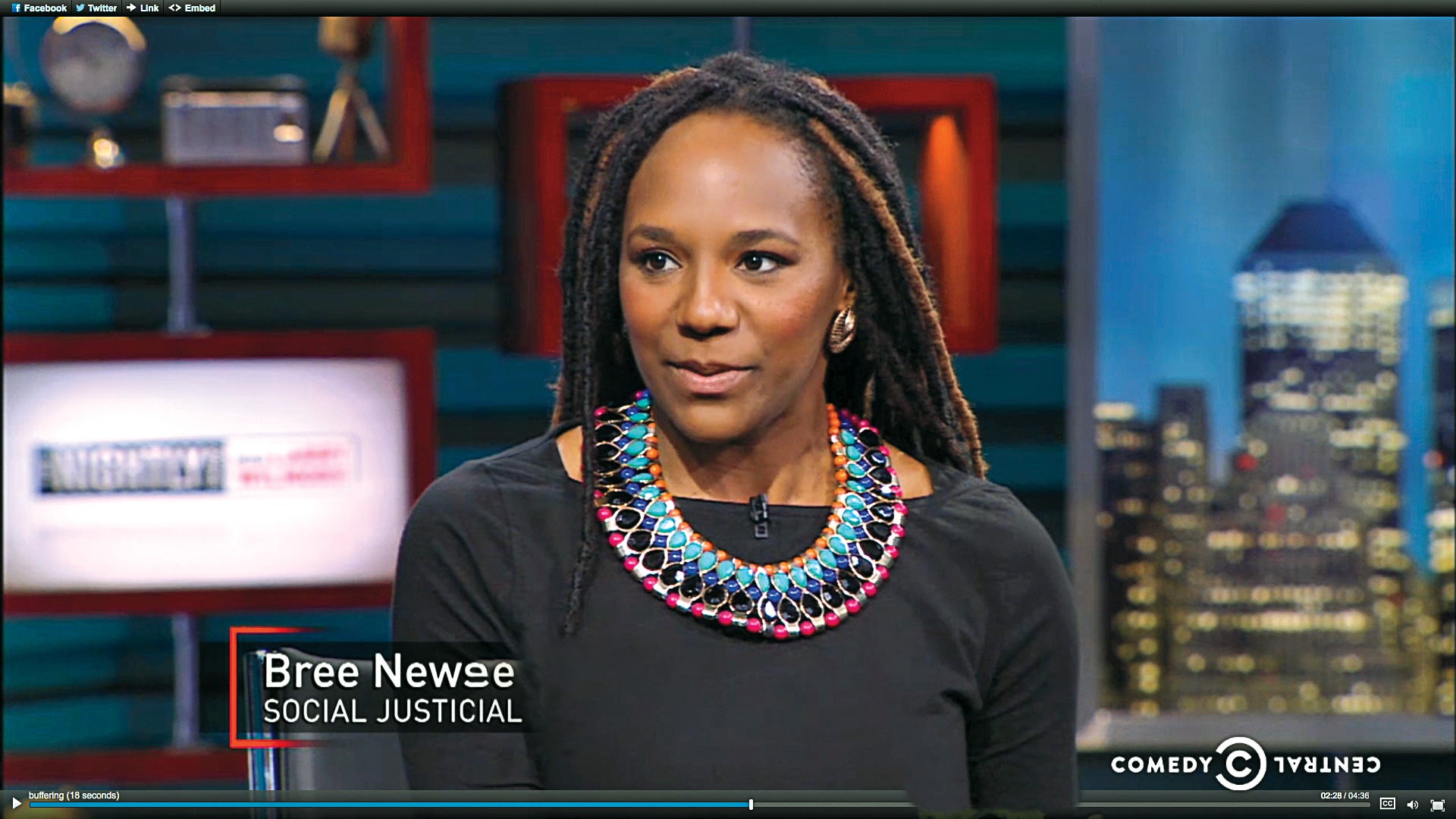
On June 27, ten days after alleged White supremacist Dylann Roof massacred nine Black parishioners at Emanuel AME Church in Charleston, Brittany “Bree” Newsome, a filmmaker, hoisted herself up a 30-foot-high steel pole outside the South Carolina statehouse, unhooked the Confederate flag and carried it down. Newsome’s defiant act in the face of terrorism and racist hatred was part of an organized effort among a small group of protestors called The Tribe. ESSENCE spoke to Newsome about what’s next for her in the movement.
ESSENCE: First, how did you learn how to scale a pole?
BREE NEWSOME: An activist named Heather flew down from New York to train me. We went to a park and practiced on lampposts, basketball hoops, and then I got to practice on one flagpole. The very first attempt I made…I was just completely winded, thinking, I don’t know how I can climb 30 feet. Once I got the rhythm of it, it was fine. It’s actually more leg strength than arm strength.
ESSENCE: What was going through your mind as you were ascending to the flag?
NEWSOME: I was just so focused, because otherwise it would have been really easy to psyche myself out. When we were training, we practiced popping out of the car and climbing up…and just really focusing on the task at hand.
ESSENCE: Why was it so important for a Black woman to be the one to take down the flag?
NEWSOME: Oftentimes the work of Black women has gotten erased from the civil rights struggle. There were Black men who participated in this action, but we thought that a Black woman would be a very strong symbol.
ESSENCE: How did you feel when the flag was officially taken down just days after your act?
NEWSOME: I was relieved, but at the same time I’m still kind of blown away by the level of resistance to it. I think the whole pageantry around the removal was too much. It’s still sending a message that this flag needs to be honored.
ESSENCE: What’s been the most unexpected part of this whole ordeal?
NEWSOME: I’ve been surprised at the cross section of people I’m getting responses from—huge response from the Christian community, people in Egypt, South Africans fighting against monuments of White supremacy and colonialism there. So I’m just so humbled by it, the power that was created in that moment. I almost underestimated it. It created something beautiful.
ESSENCE: As a young girl, your grandmother saw the Klan dragging her neighbor out of a house. What did she think of you scaling that pole?
NEWSOME: She was really proud of me. I was kind of scared to talk to her, because I didn’t want her to worry about me. So when I first told her I was in jail and she said, “Who made the decision that you would be the one to climb the pole?” I thought she was upset. I said “I did.” And she just broke out laughing. So she’s really proud.
ESSENCE: What can we expect from you in the future?
NEWSOME: What we’re really hoping to do with Tribe and other local organizations is to develop a model for sustainable change and organization. We’re facing a lot of crisis. We don’t see action happening nationally for our lower-income communities here in Charlotte. We can come together as citizens to empower disempowered people who don’t have the agency to do this. It’s not going to be just one person changing the world.
Kristal Brent Zook (@KristalZook) is the author of Black Women’s Lives: Stories of Power and Pain (Nation Books) and a professor of journalism at Hofstra University in New York.
This article originally appeared in the September 2015 issue of ESSENCE magazine, on newsstands now!
